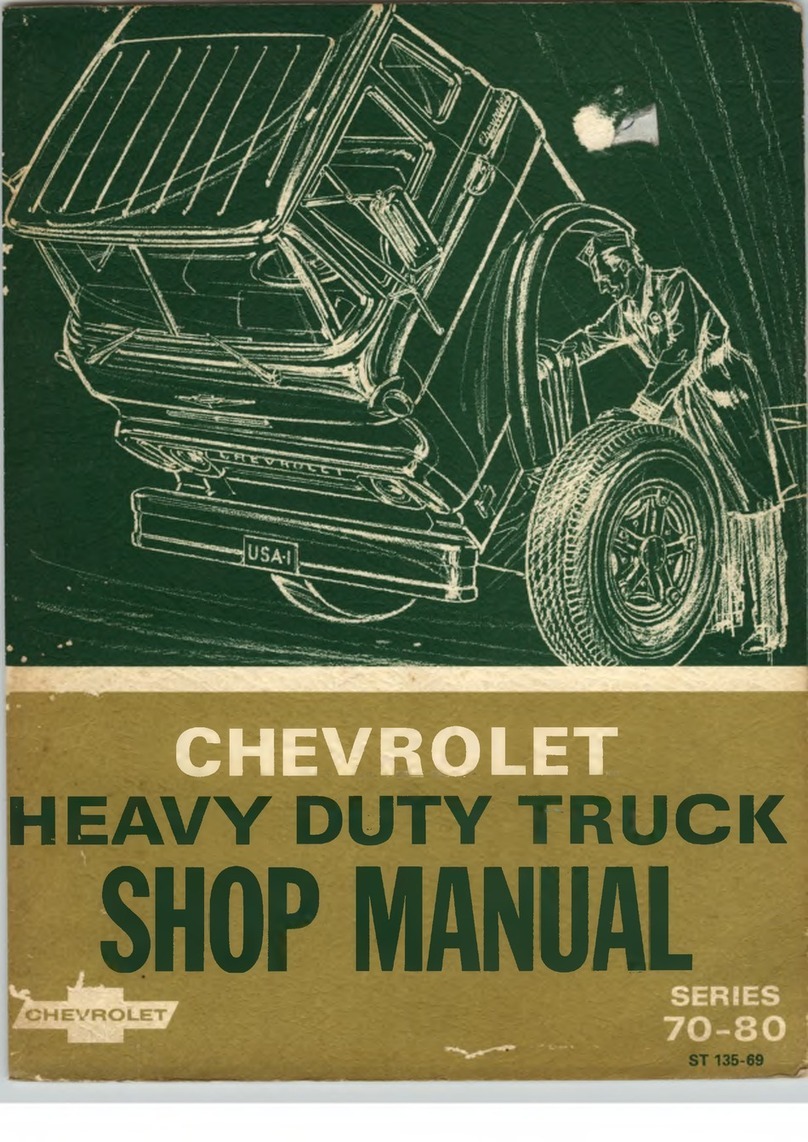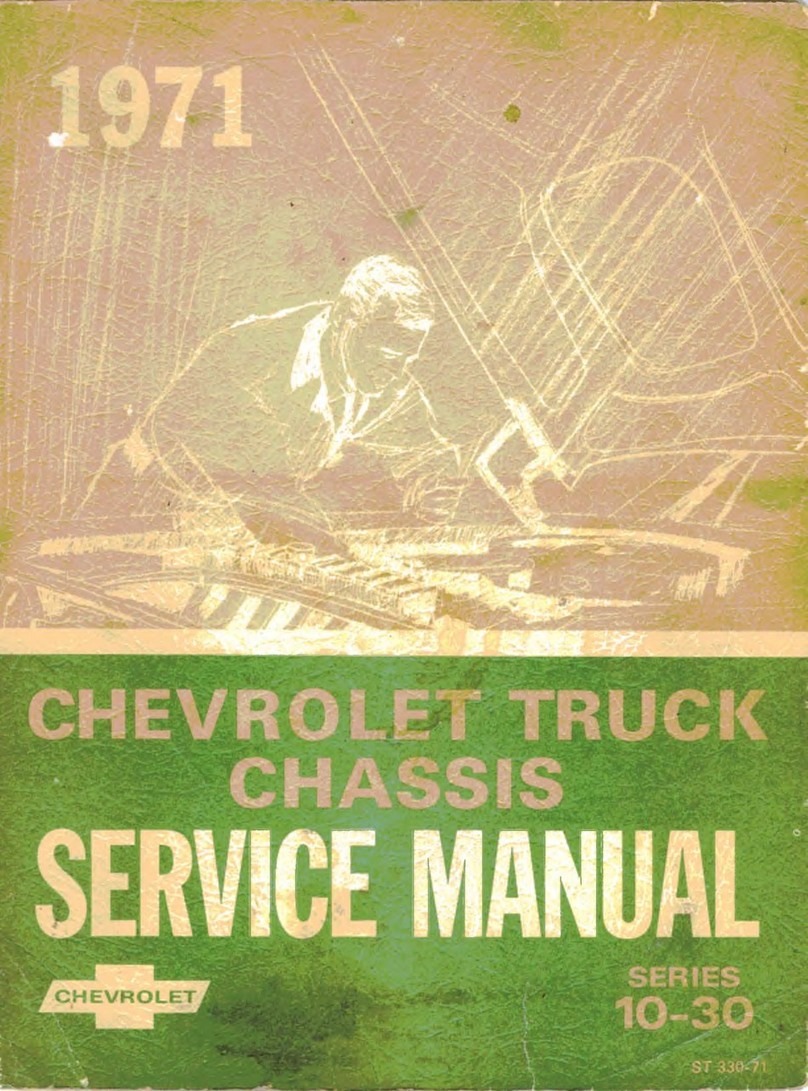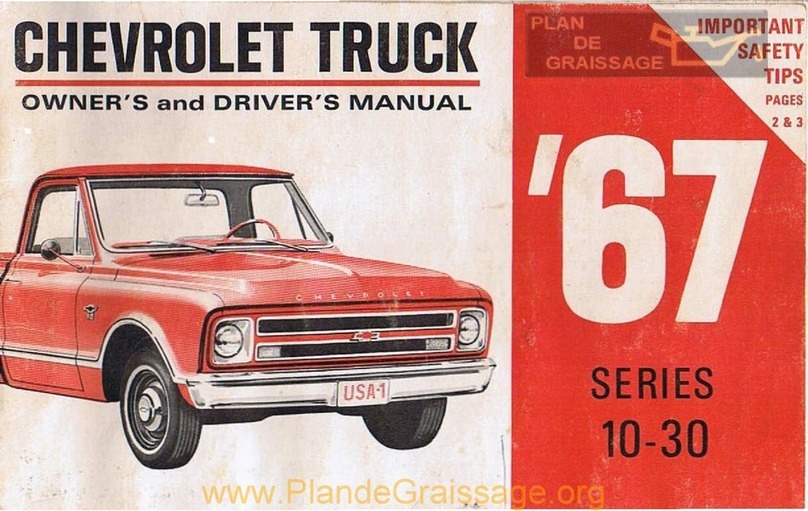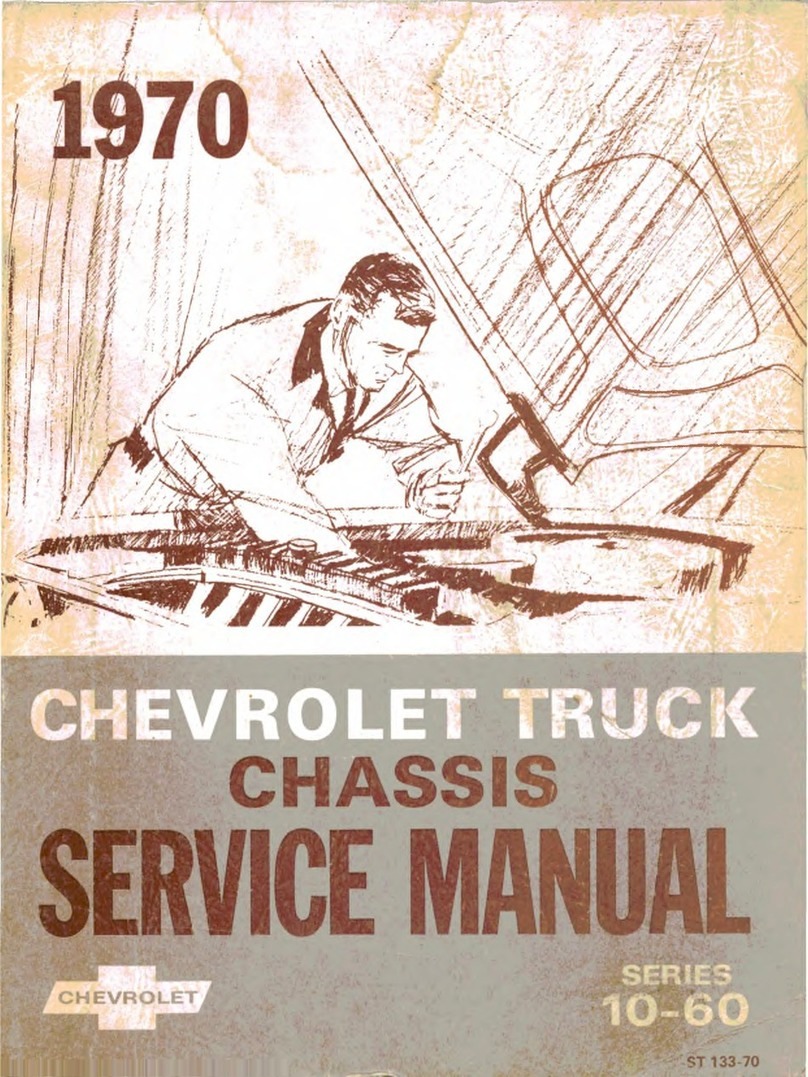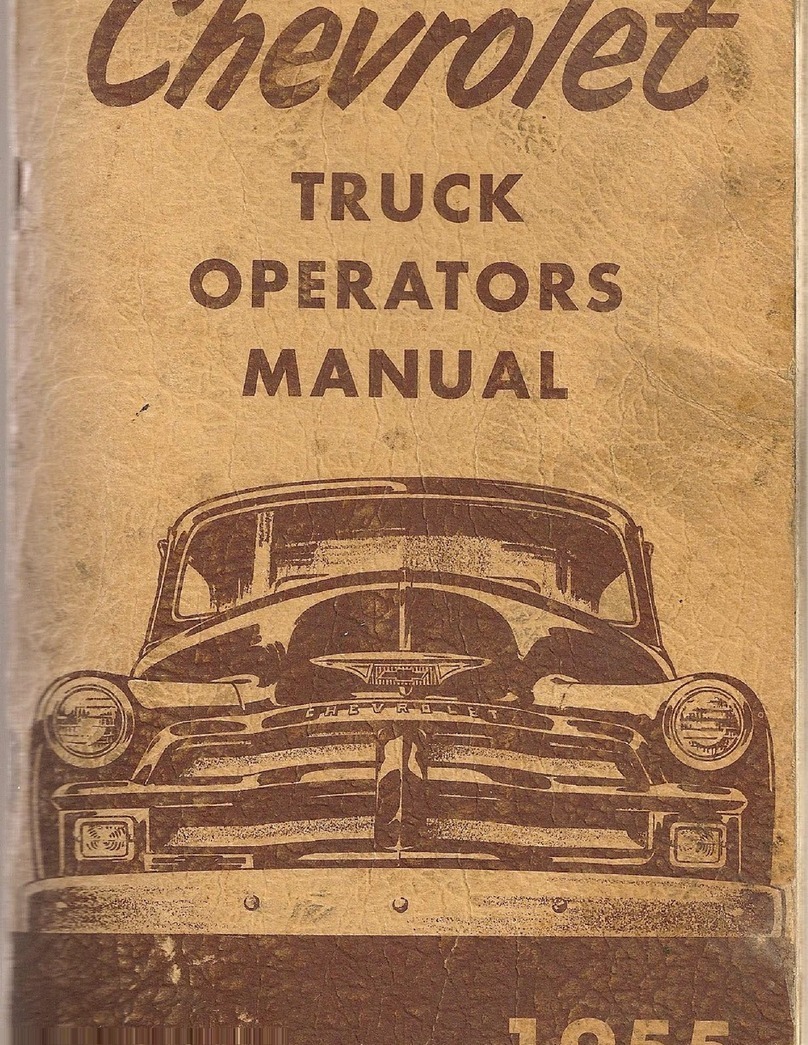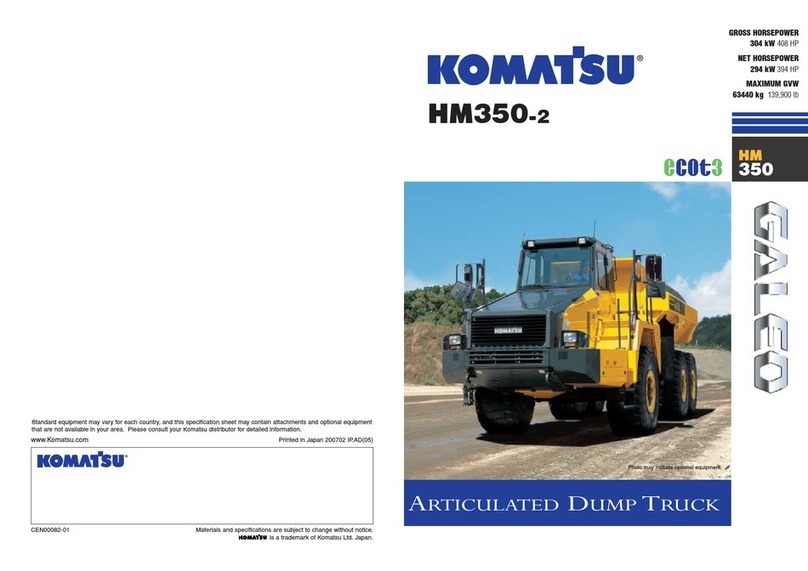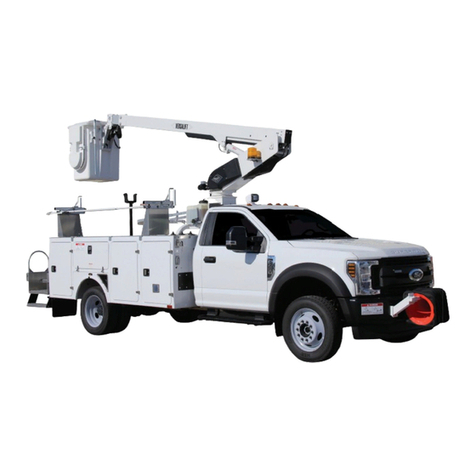
GENERAL IN ORMATION
IMPORTANT-READ THIS PAGE
TRUCK MODELS COVERED
This manual contains on-the-vehicle” main
tenance and light repair information on Chevrolet
Truck Models listed on page v. Since many truck
models with various combinations of equipment
are covered in this manual, the reader must
necessarily refer to truck model applications and
methods of distinguishing design differences in
each manual section.
All standard equipment and the most com
monly used regular production options are
included in this manual. Many special equipment
and accessory items are available on Chevrolet
Trucks, however, these items are too numerous to
permit their coverage in this manual.
MANUAL ARRANGEMENT
This manual is divided into major sections in
the sequence shown on the margin of the title
page. A black tab bearing the major section
number is placed on the first page of each major
section which indexes with the tab on the title
page. Many of the major sections are divided into
sub-sections, each sub-section containing impor
tant and specific information on related units or
components. A section index is also included on
the first page of each major section, when the
major section is divided into sub-sections.
PAGE AND ILLUSTRATION NUMBERS
The manual pages are numbered consecutively
within each section. Illustrations are numbered
consecutively within each section, or within each
sub-section when the major section is so divided.
SPECIFICATIONS
Service data, fits, and tolerances are listed at
end of each section or sub-section under the head
ing Specifications.” In some cases reference
must also be made to these Specifications” for
model application and methods of distinguishing
the various design and construction differences.
Manufacturers model or part numbers are used
in many instances in the Specifications” tabula
tions. These numbers are provided primarily for
unit identification or truck model application
reference, and should be referred to when order
ing parts. All detail service part numbers must be
obtained from the applicable Parts Book.
SPECIAL TOOLS
Special tools and equipment are mentioned,
and in many instances illustrated, throughout the
text. These tools are specially designed to accom
plish certain operations efficiently and readily.
Such tools are mentioned in the text by tool
vendor’s numbers. These tools are not offered for
sale by Chevrolet Motor Division. Information
regarding availability of these tools can be
obtained from your Zone Office.
SERVICE BULLETINS
Service bulletins are issued, when required,
supplementing or in some cases superseding infor
mation in this manual. Information in these
bulletins should be noted in the text of the
applicable manual section and the bulletin filed
for ready reference.
OPERATION
Operating instructions from the standpoint of
the driver are included in a booklet entitled
Owner’s and Driver’s Manual” which is placed in
the cab of every new Chevrolet Truck.
ALPHABETICAL INDEX
Important subjects, with manual page number
references, are alphabetically listed in the index in
the back of this manual.
iv CHEVROLET 40- 0 TRUCK SERVICE MANUAL
